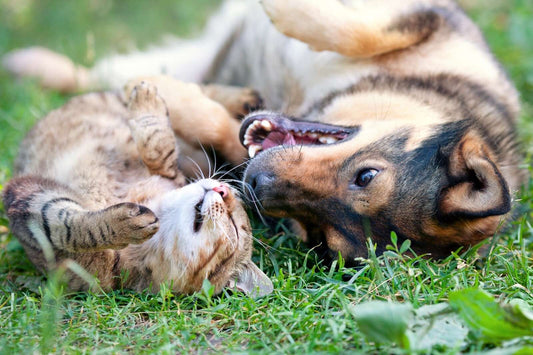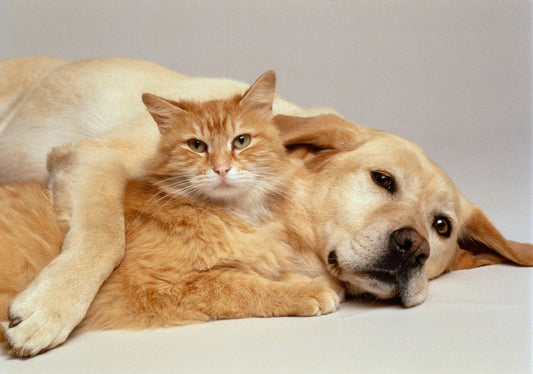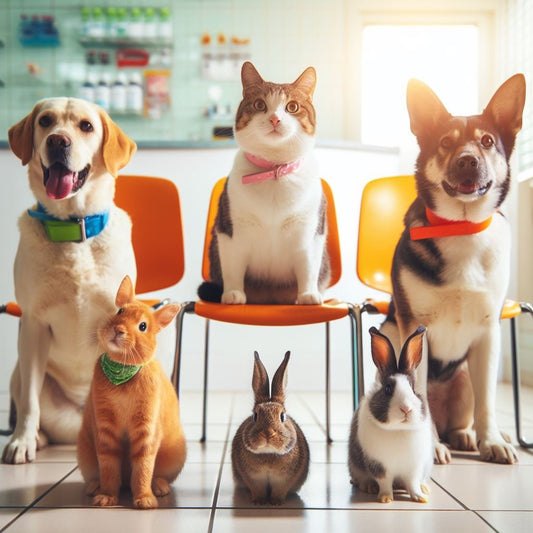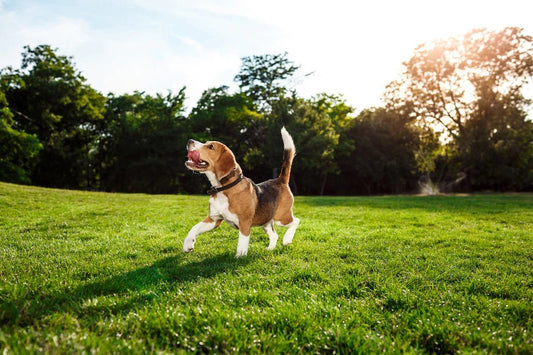Named after the village they originated in, Pandikona is an endangered desi sighthound breed hailing from Andhra Pradesh. Due to this breed’s striking resemblance to the European Dobermans, Pandikona is also commonly referred to as the “Indian Doberman.”.
Although the population of Pandikona is steadily shrinking in our country, with their free-spirited nature, this breed wins all hearts wherever they go. This post will throw light on their appearance, personality, and living requirements that you need to be familiar with before bringing one home.

Height: 22-26 inches in males; 20-24 inches in females
Weight: 25-32 kilograms in males; 20-26 kilograms in females
Lifespan: about 12-15 years
Coat type: short and smooth
Colors: Fawn and black, with occasional white patches
The Appearance of Pandikona
The face of Pandikona is quite similar to that of a Doberman, with their mid-sized muzzle and large, pointy-edged ears with a persistent droop. Overall, this breed has a medium-built body with significantly muscular legs that lend them great speed while running.
Pandikonas have a long and thick tail that often stands upright with a curved end. The color of this breed can vary with their heritage. Black and fawn are the most common colors with the ones with white patches being rarer.
The Personality of Pandikona
With their high-energy levels, eagerness to please their owners, and unwavering loyalty, a Pandikona will win your heart right away. They fit right in with both large and small families and are easy to train as long as you start young.
Pandikonas also get along well with children and once they bond with the little ones, the dogs will protect them fiercely. But when it comes to adults, Pandikonas see all strangers, and other animals, with caution and wariness and will not hesitate to attack if they sense a threat. This instinct can be traced back to their status as village guard dogs, which makes them extremely territorial and with a tendency for bad temper.
This is why these dogs do not make ideal second pets.
Is Pandikona an apartment-friendly breed?
No. Pandikonas are used to roaming around villages freely and have an independent, wandering spirit. Keeping them confined within the four walls of an apartment is unhealthy for this breed and will end up making them irritable.
Caring for your Pandikona
What is raising a Pandikona going to be like for you? Let’s find out!
Training and socialization
Pandikonas are not the most intelligent breed you’ll find out there. If you’re new to pet parenting, it’s best to get expert help while training them. Because these sighthounds have strong hunting and guarding instincts, it’s best to start their training and socialization early which will help them get along well with friends and family.
Exercise
As a primitive dog breed, Pandikonas require plenty of exercise along with a large space to run and play around at any time. If you own a Pandikona, it’s important to take them on brisk walks or jogs twice a day and indulge them in other physical activities, such as obstacle runs, catch, tug of war, trail run, and so on, once or twice a week.
Grooming and maintenance
As far as grooming and maintenance are concerned, Pandikona’s needs are minimal. This breed has a short fur coat and sheds very little, demanding no extra attention to brushing or grooming. Bathing them twice a month should be enough to keep them clean and tidy.
As an outdoorsy breed, Pandikonas also have robust health and rarely fall sick. All in all, they’re self-reliant and will need minimal care from you.
There’s just one thing you need to know about this breed. Bred in the warm climate of Andhra Pradesh, these dogs are not familiar with harsh winters and might be vulnerable to dropping temperatures. Therefore, it is best not to have them as pets if you live in the colder parts of the country.
To wrap it up, if you’re looking for a loyal, active, and fun-loving breed with a bit of wanderlust, you can welcome Pandikona into your home today.











